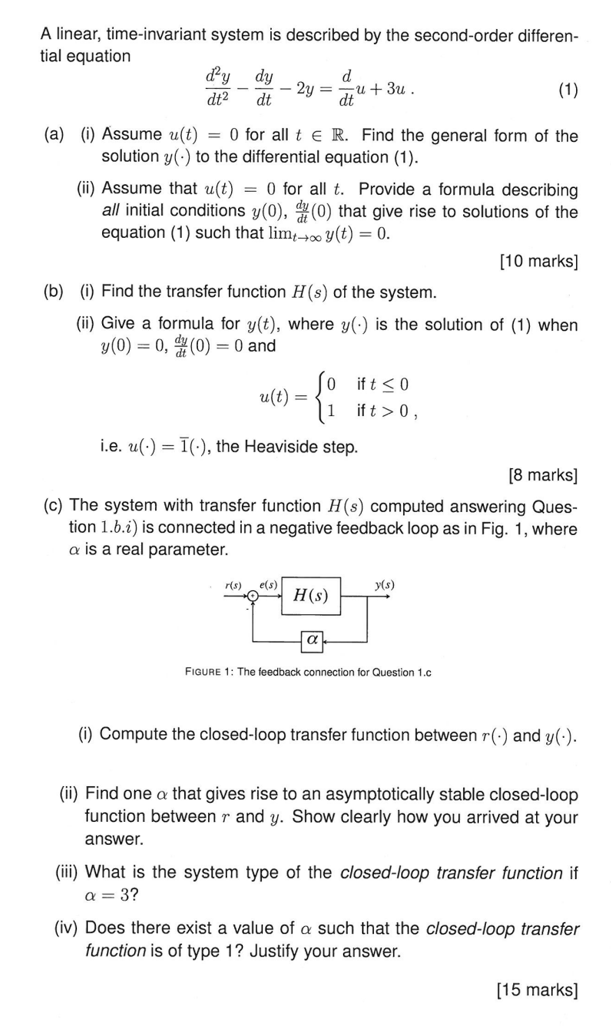Home /
Expert Answers /
Mechanical Engineering /
a-linear-time-invariant-system-is-described-by-the-second-order-differential-equation-frac-d-pa366
(Solved): A linear, time-invariant system is described by the second-order differential equation \[ \frac{d^ ...
A linear, time-invariant system is described by the second-order differential equation \[ \frac{d^{2} y}{d t^{2}}-\frac{d y}{d t}-2 y=\frac{d}{d t} u+3 u . \] (a) (i) Assume \( u(t)=0 \) for all \( t \in \mathbb{R} \). Find the general form of the solution \( y(\cdot) \) to the differential equation (1). (ii) Assume that \( u(t)=0 \) for all \( t \). Provide a formula describing all initial conditions \( y(0), \frac{d y}{d t}(0) \) that give rise to solutions of the equation (1) such that \( \lim _{t \rightarrow \infty} y(t)=0 \). [10 marks] (b) (i) Find the transfer function \( H(s) \) of the system. (ii) Give a formula for \( y(t) \), where \( y(\cdot) \) is the solution of (1) when \( y(0)=0, \frac{d y}{d t}(0)=0 \) and \[ u(t)=\left\{\begin{array}{ll} 0 & \text { if } t \leq 0 \\ 1 & \text { if } t>0 \end{array}\right. \] i.e. \( u(\cdot)=\overline{1}(\cdot) \), the Heaviside step. [8 marks] (c) The system with transfer function \( H(s) \) computed answering Question 1.b.i) is connected in a negative feedback loop as in Fig. 1, where \( \alpha \) is a real parameter. FIGURE 1: The feedback connection for Question 1.c (i) Compute the closed-loop transfer function between \( r(\cdot) \) and \( y(\cdot) \). (ii) Find one \( \alpha \) that gives rise to an asymptotically stable closed-loop function between \( r \) and \( y \). Show clearly how you arrived at your answer. (iii) What is the system type of the closed-loop transfer function if \( \alpha=3 \) ? (iv) Does there exist a value of \( \alpha \) such that the closed-loop transfer function is of type 1 ? Justify your answer.
Expert Answer
Here is the solution of question.A To solve this problem, we can follow a similar process as before. First, we will take the Laplace transform of both
